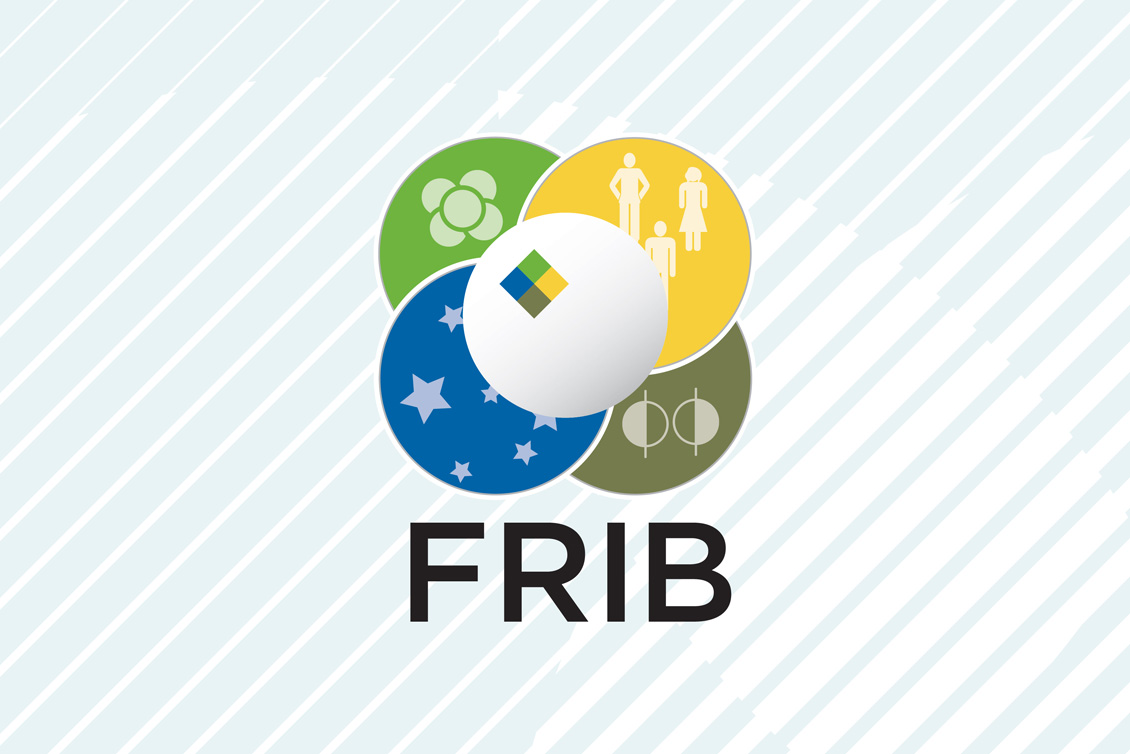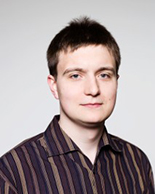First winners of FRIB Achievement Award for Early Career Researchers named

Share this article:
Share this article:
The FRIB Users Organization Executive Committee and the FRIB Theory Alliance Executive Board have announced the winners of the inaugural FRIB Achievement Award for Early Career Researchers. Jack Bishop, from Texas A&M University, and Wei Jia Ong, from Lawrence Livermore National Laboratory, are the co-recipients of the 2021 experimental award. Christian Drischler, from Michigan State University, is the recipient of the 2021 theory award.
The FRIB Achievement Award for Early Career Researchers recognizes outstanding original contributions to the field of nuclear physics through work at or relating to FRIB, performed by scientists early in their careers.
The annual award consists of a plaque with the awardee’s name and institution, and $3,000 for participant support to attend the annual Low Energy Community Meeting, receive the award, and give an invited plenary presentation on the awarded work.
Jack Bishop

Bishop’s research involves the adaptation and use of a high-resolution time projection chamber (TPC) for measurements critical to astrophysics and nuclear structure. His effort resulted in one-at-a-time beta-decay spectroscopy with 10-kiloelectron volt detection limits and a detection sensitivity of branching ratios down to 0.01 percent for a special configuration of carbon-12, known as the Hoyle state, to disintegrate directly into three alpha-particles. Additionally, stringent limits on the likelihood of the Efimov effect in carbon-12 could also be ascertained with this technique. The Efimov effect is an effect in the quantum mechanics of few-body systems (systems consisting of a small number of well-defined structures) predicted by the Russian theoretical physicist Vitaly N. Efimov. Ongoing efforts also allowed for the study of neutron-induced reactions with an active-target TPC for the first time to study reactions relevant to the formation of carbon in stars.
“The development of new experimental techniques and the use of new detector technologies is vital to the science program at FRIB,” said Bishop. “TPCs represent a tremendous leap forward in being able to study the radioactive beams that will be available at FRIB where the low-intensity of beams far from the valley of stability mean that ‘every ion counts.’ “
Due to advances in construction techniques and data acquisition systems, these TPCs are an affordable instrument for nuclear physics. Bishop’s research demonstrates the use of a TPC (the TexAT TPC) to measure the properties of light nuclei using novel techniques that further demonstrate the applicability of TPCs to nuclear physics using a variety of different experimental techniques.
“With the fantastic quality of radioactive ion beams afforded by FRIB, future experiments with TPCs will be able to further deepen our understanding of the atomic nucleus,” Bishop said. “Only at FRIB will we have access to probe the most exotic regions of the nuclear chart.”
Bishop received a PhD from the University of Birmingham in 2018 where he studied experimental signatures of alpha-condensates in light nuclei. He is currently a postdoctoral research associate at the Cyclotron Institute at Texas A&M University, where he has been a part of Grigory Rogachev’s group since 2018. He primarily focuses on studying light nuclear systems using beta-delayed charged-particle spectroscopy of radioactive ion beams and neutron-induced reactions with the Texas Active Target (TexAT) TPC.
Christian Drischler

Drischler’s research focuses on the nuclear equation of state (EOS) and neutron stars in general. He has been developing a Monte Carlo framework for Many-Body Perturbation Theory and Bayesian statistical methods that enable state-of-the-art effective field theory calculations of nuclear matter with theoretical uncertainties quantified. Applications of these methods shed light on the properties of heavy neutron-rich nuclei and the dense matter inside neutron stars.
Constraining the EOS of neutron-rich matter simultaneously from astrophysical observations, laboratory experiments, and nuclear theory is crucial for a fundamental understanding of strongly interacting matter. In anticipation of novel empirical constraints, for example from FRIB or multimessenger astronomy, Drischler’s research aims to provide accurate microscopic predictions of the EOS based on chiral interactions up to high orders by taking advantage of the recent advances in chiral effective field theory and many-body perturbation theory.
To confront microscopic predictions with experimental and observational constraints on the nuclear EOS, including the nuclear symmetry energy, statistically meaningful theoretical uncertainty estimates are crucial. To this end, Drischler and his collaborators have developed a Bayesian framework for quantifying correlated effective field theory uncertainties in the nuclear EOS using machine learning.
FRIB will reach the widest range of isotopes possible. To predict properties of heavy neutron-rich nuclei and neutron star matter from nuclear theory, it is important to improve current chiral nuclear forces.
“FRIB will probe extremely neutron-rich nuclei. This will provide insights into the dense (neutron-rich) matter inside neutron stars and the convergence pattern of chiral effective field theory,” said Drischler. “It will also allow us to test and constrain nuclear forces (especially three-nucleon forces) derived from chiral effective field theory in a regime that has not been accessible so far.”
Drischler received a doctoral degree in physics from the Technical University of Darmstadt in 2017. His thesis advisor was EMMI Professor of Physics Achim Schwenk. For the scientific achievements in his dissertation, he received the 2018 Research Award of the Gerhard Herzberg Foundation at TU Darmstadt. From 2017 to 2020, he was a (postdoctoral) Feodor Lynen Fellow of the Alexander von Humboldt Foundation hosted by Professor Wick Haxton in the Department of Physics at the University of California, Berkeley. His research interests include neutron stars, the nuclear EOS, effective field theory, many-body perturbation theory, Bayesian uncertainty quantification, and high-performance computing. Drischler is currently an FRIB Theory Fellow at Michigan State University.
Wei Jia Ong

Ong’s research utilizes a diverse set of tools to understand the physics behind x-ray bursts and superbursts. Her efforts have resulted in multiple high-impact results on the masses and decay probabilities of several Urca cooling pairs, such as vanadium-61 and chromium-61, in the crust of neutron stars. The Urca process is a reaction which emits a neutrino and which is assumed to take part in cooling processes in neutron stars and white dwarfs.
Neutron stars are among the densest astrophysical objects in the universe, and the state of the ultradense matter at the core of neutron stars is still unknown. A neutron star in a binary system can siphon material from its companion and burn this material at its surface. Once growth has stopped, the nuclear burning atop the neutron-star surface also ceases, and the crust cools toward equilibrium with the core. This cooling process takes years and allows researchers to “look” deeper into the neutron star as time progresses. The ongoing nuclear reactions in the crust, such as Urca cooling, will change the thermal structure and cooling behavior of the star and need to be well accounted for to extract neutron-star properties. Ong’s work at the laboratory centered mostly on understanding the nuclear reactions during thermonuclear burning on the neutron-star surface (that eventually becomes the crust) and the deep crustal nuclear processes that impact the cooling.
”We can perform experiments with FRIB which were previously impossible, both because of the accelerator and the new ‘tools’ which are envisioned for FRIB (such as the Separator for Capture Reactions and the High Rigidity Spectrometer)” said Ong. “There is a huge potential for discovery. The other thing I appreciate about FRIB is the massive community it brings together.”
Ong received a PhD in physics from Michigan State University in 2018, working with Hendrik Schatz on radioactive beam experiments to probe the nuclear processes that occur in accreted neutron star crusts. After completing her PhD, she worked in the physics division at Argonne National Laboratory, performing nuclear physics experiments using the Multi-Sampling Ionization Chamber (MUSIC) with Melina Avila and Ernst Rehm. Ong joined Lawrence Livermore National Laboratory in 2018 as a Lawrence Fellow.
The selection committees concluded that all candidates were strong contenders for the award. The Experiment Selection committee unanimously decided that the most appropriate outcome for the inaugural award was to recognize Ong and Bishop equally for their impressive and complementary contributions to the field.
“All of our nominees this year are outstanding, and we would like to congratulate each of them on their scientific achievements,” said FRIB Users Organization Secretary Kelly Chipps, on behalf of the selection committees. “We look forward to equally impressive nominations in future years.”
The recipients will present their work during the plenary session at the 2021 Low Energy Community Meeting in August.
Michigan State University (MSU) establishes and operates FRIB as a user facility for the Office of Nuclear Physics in the U.S. Department of Energy Office of Science. Hosting the most powerful heavy-ion accelerator, FRIB will enable scientists to make discoveries about the properties of rare isotopes in order to better understand the physics of nuclei, nuclear astrophysics, fundamental interactions, and applications for society, including in medicine, homeland security, and industry.
The U.S. Department of Energy Office of Science is the single largest supporter of basic research in the physical sciences in the United States and is working to address some of today’s most pressing challenges. For more information, visit energy.gov/science.

